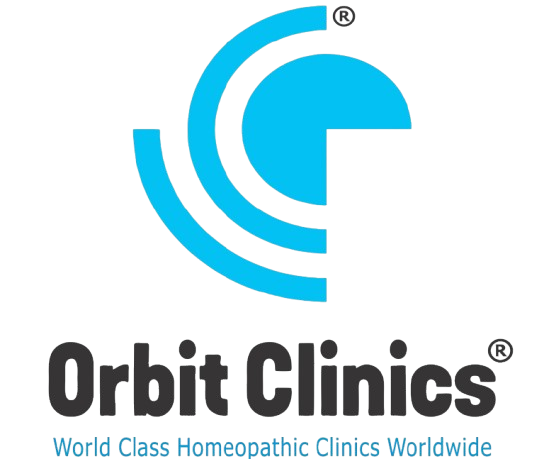“Exploring the Diagnostic, Prognostic, and Therapeutic Implications of GGT in Health and Disease”

Written by
Dr. Deepak Sharma
BHMS, MD, Ph.D. (Scholar)
Homeopathic Physician and Educator
Founder – Orbit Clinics (World Class Homeopathic Clinics Worldwide)
Abstract:
This comprehensive review explores the multifaceted enzyme gamma-glutamyl transferase (GGT), its complex role in human health, and its potential as a diagnostic and prognostic tool. The enzyme’s core function in the gamma-glutamyl cycle and glutathione homeostasis situates it centrally in processes managing oxidative stress and maintaining cellular health. Despite its primary association with hepatobiliary disease, elevated GGT levels are also indicative of other conditions like diabetes, cardiovascular disease, and certain malignancies. Paradoxically, elevated GGT activity can contribute to oxidative stress, underscoring the enzyme’s complex role in health and disease. Emerging research areas include the role of GGT in tumorigenesis, aging, neurodegeneration, and the exploration of its genetic determinants. Lifestyle factors, including diet and exercise, also significantly impact GGT levels and related health outcomes. The review further outlines the potential role of homeopathy in managing conditions associated with altered GGT levels. The evidence base for this remains nascent, and homeopathy should function as a complementary approach alongside conventional medical treatments. Further research into the intriguing enzyme promises more insights into its complex role in health and disease, paving the way for potential therapeutic interventions.
Introduction:
Gamma-glutamyl transferase (GGT) is an essential enzyme that has been the subject of scientific attention for decades due to its diagnostic and prognostic significance. This intriguing protein plays a pivotal role in crucial biochemical processes, such as the gamma-glutamyl cycle, a key pathway in amino acid metabolism and glutathione homeostasis. However, the broader picture of GGT’s role in health and disease continues to be illuminated, providing us with fascinating insights into its multifaceted character.
The Molecular Function and Structure of GGT:
Gamma-glutamyl transferase, a membrane-bound enzyme, is primarily found on the external surface of cells in many tissues throughout the body, including the liver, pancreas, and kidneys. It catalyzes the initial step in the degradation of glutathione (GSH), a potent antioxidant, which involves transferring the gamma-glutamyl moiety of GSH to an acceptor molecule, most commonly an amino acid.
The GGT enzyme is a heterodimeric glycoprotein composed of two subunits, a heavy chain and a light chain, which are held together by disulfide bonds. The active site of the enzyme, crucial for catalytic activity, is located in the light chain. The heavy chain is implicated in anchoring the enzyme to the cell membrane.
GGT’s Role in the Gamma-Glutamyl Cycle:
The gamma-glutamyl cycle, also known as the Meister cycle, is an essential metabolic pathway. Its primary function is to regenerate intracellular glutathione, a molecule critical for managing oxidative stress and maintaining cellular health. GGT plays a pivotal role in this cycle, enabling the breakdown and subsequent resynthesis of glutathione.
GGT activity is essential for the extracellular breakdown of glutathione, thereby providing cysteine, the rate-limiting amino acid for intracellular glutathione synthesis. This activity is crucial for maintaining cellular antioxidant defenses, particularly in the face of oxidative stress.
GGT in Health and Disease:
The clinical importance of GGT lies in its role as a sensitive but non-specific marker of hepatobiliary disease. Elevated serum GGT levels can indicate diseases such as alcohol-induced liver disease, viral hepatitis, and bile duct obstruction. However, it’s essential to note that elevated GGT levels can also be seen in other conditions such as diabetes, cardiovascular disease, and certain malignancies.
Research has also highlighted the association between high GGT levels and an increased risk of metabolic syndrome, a cluster of conditions that include increased blood pressure, high blood sugar, excess body fat around the waist, and abnormal cholesterol or triglyceride levels. This association has led to the increasing recognition of GGT as a potential predictive marker for cardiovascular disease.
GGT and Symptomatology:
Signs of Increased or Decreased Levels Increased levels of GGT in the blood, typically assessed through a GGT blood test, are a common sign of liver disease, including hepatitis or cirrhosis, and may also indicate heart failure. Increased GGT levels may also be associated with excessive alcohol consumption or usage of certain medications, such as phenytoin and phenobarbital. Increased GGT may not lead to specific symptoms, but it can be indicative of underlying conditions that may manifest various symptoms. For instance, liver disease can cause symptoms such as:
- Jaundice (a yellowing of the skin and eyes)
- Abdominal pain and swelling
- Chronic fatigue
- Nausea or vomiting
- Loss of appetite and weight loss
- Swelling in the legs and ankles (edema)
- Itchy skin
- Dark urine color
- Pale stool color, or bloody or tar-colored stool
Decreased levels of GGT are less common and generally not considered clinically significant. However, very low GGT levels might be seen in certain metabolic or genetic disorders, but these are rare. Symptoms related to decreased GGT levels would likely be related to the underlying disorder rather than the low GGT level itself.
Oxidative Stress and the Role of GGT:
Oxidative stress is a biological condition where there is an imbalance between the production of reactive oxygen species (ROS) and the body’s ability to counteract or detoxify their harmful effects through neutralization by antioxidants. This state of imbalance can lead to cellular damage, contributing to various pathophysiological conditions, including aging, neurodegeneration, cardiovascular diseases, and cancer.
In this context, GGT plays a vital role in counteracting oxidative stress due to its involvement in glutathione metabolism. Glutathione (GSH), one of the most potent intracellular antioxidants, is a tripeptide composed of three amino acids: glutamate, cysteine, and glycine. GGT is responsible for the extracellular breakdown of glutathione, providing cysteine residues that can be utilized for the intracellular resynthesis of glutathione.
By facilitating the recycling of glutathione, GGT plays a pivotal role in maintaining the antioxidant defenses of the body. This function is particularly important during periods of oxidative stress when the demand for glutathione is increased. GGT activity ensures that cells have a sufficient supply of cysteine to synthesize new glutathione molecules, thus helping to neutralize reactive oxygen species and protect cells from oxidative damage.
However, elevated GGT activity can paradoxically contribute to oxidative stress. This is because the breakdown of glutathione by GGT results in the generation of free radicals, which can exacerbate oxidative stress if not appropriately neutralized. This dichotomy is indicative of the complex nature of GGT’s role in health and disease, highlighting the importance of maintaining a delicate balance.
Furthermore, there is a growing body of evidence linking oxidative stress with elevated serum GGT levels. Numerous studies have shown that high serum GGT levels can be a marker of oxidative stress, and can be associated with various conditions characterized by increased oxidative damage, such as cardiovascular diseases, metabolic syndrome, and certain types of cancer. This suggests that GGT could potentially be used as a clinical biomarker for oxidative stress, although more research is needed to fully understand the implications of this relationship.
In addition to its role in oxidative stress, GGT may also contribute to disease processes through other mechanisms related to its enzymatic activity. For instance, the breakdown of extracellular glutathione by GGT can lead to an increase in the levels of gamma-glutamyl amino acids, which have been implicated in cell proliferation, inflammation, and fibrosis.
Future Perspectives and Research Directions:
The past few decades have witnessed an exponential increase in our understanding of GGT, yet many aspects of this enzyme remain enigmatic. Further research into the complex interplay between GGT and other biological processes may provide new insights into its role in health and disease.
For instance, GGT’s role in tumorigenesis has been a topic of considerable interest. Some studies have suggested that GGT might contribute to cancer development and progression by increasing the levels of reactive oxygen species within cells. However, these mechanisms are not yet fully understood, and further research is needed to elucidate the precise role of GGT in cancer.
Moreover, the development of specific inhibitors of GGT could potentially open new avenues for therapeutic intervention, particularly in conditions characterized by excessive oxidative stress. The future holds exciting potential for further exploration of GGT’s role in biology and medicine.
Genetic Studies and GGT:
Recently, the focus has also shifted towards understanding the genetic basis of GGT levels. Genome-wide association studies (GWAS) have identified several genetic loci associated with serum GGT concentrations. These findings may provide valuable insights into the genetic determinants of GGT levels and the potential interplay with environmental factors. However, further studies are needed to elucidate the functional relevance of these genetic variants and their role in disease predisposition.
GGT in Aging and Neurodegeneration:
The role of GGT in aging and neurodegenerative diseases is another emerging area of research. It has been suggested that the increased oxidative stress associated with aging might lead to elevated GGT activity. Similarly, studies have also linked elevated GGT levels with an increased risk of neurodegenerative diseases such as Alzheimer’s and Parkinson’s disease. However, the exact mechanisms underlying these associations remain unclear and warrant further investigation.
Diagnostic and Prognostic Applications of GGT:
Given the potential link between elevated GGT levels and various diseases, the use of GGT as a diagnostic and prognostic tool is also an area of ongoing research. While the enzyme is already widely used in diagnosing liver diseases, there is potential for its use in assessing the risk and prognosis of a wide range of other conditions, from cardiovascular diseases to various forms of cancer.
Moreover, the combination of GGT measurements with other biomarkers may enhance the diagnostic and prognostic power. For instance, the combination of GGT with C-reactive protein, a marker of inflammation, may provide a more robust predictor of cardiovascular risk.
Homeopathy and GGT: A Holistic Perspective:
Homeopathy, a holistic system of medicine that originated in Germany in the 18th century, is based on the principle of “like cures like,” also known as the law of similars. Homeopathic practitioners use minimal doses of substances that in larger amounts would produce symptoms of illness in healthy individuals to stimulate the body’s self-healing abilities.
In the context of Gamma-glutamyl transferase (GGT), homeopathy can play a role in managing conditions associated with elevated GGT levels. It is important to note that homeopathy doesn’t directly target the enzyme or its activity. Instead, it aims to address the underlying health issues that might lead to changes in GGT levels, thus indirectly influencing the enzyme’s activity.
For instance, liver diseases, which often present with elevated GGT levels, can be managed using homeopathic remedies such as Carduus Marianus, Chelidonium, and Nux vomica. These remedies have traditionally been used to support liver function and treat symptoms associated with liver disorders.
Similarly, if elevated GGT levels are associated with excessive alcohol consumption, homeopathic remedies such as Sulphur and Nux vomica, known for their application in cases of alcohol dependency, could be beneficial.
Homeopathy and Oxidative Stress:
Given the crucial role of GGT in the gamma-glutamyl cycle and glutathione homeostasis, its connection to oxidative stress is apparent. Homeopathy has potential in managing oxidative stress, which is implicated in a variety of diseases, including cardiovascular diseases, neurodegenerative disorders, and certain types of cancer.
Several homeopathic remedies such as Arnica Montana, Lycopodium clavatum, and Phosphorus have been traditionally used for conditions associated with oxidative stress. It’s important to note that while these remedies don’t directly modulate GGT activity, they can contribute to overall health by addressing the symptoms and conditions associated with oxidative stress.
Homeopathy in Diagnostic and Prognostic Applications of GGT
While homeopathy doesn’t directly influence the diagnostic and prognostic applications of GGT, it can contribute to the overall understanding of the patient’s health. Homeopaths consider the patient’s overall health, including their physical, mental, and emotional states, in their diagnoses and treatment plans. Therefore, alongside GGT and other biomarkers, homeopathic practitioners may consider a wide range of symptoms and signs to provide a comprehensive treatment approach.
Cautionary Note and Future Directions
It is important to note that the evidence base for the effectiveness of homeopathy in these contexts is still developing, and more rigorous, well-designed studies are needed. The current state of knowledge supports homeopathy as a complementary approach, used alongside conventional medical treatments. It should not replace traditional medical approaches, especially in the case of severe or life-threatening conditions associated with high GGT levels, such as liver disease or cancer.
The potential integration of homeopathy in the management of conditions associated with altered GGT levels is a fascinating area for future exploration. As our understanding of both GGT and homeopathy deepens, we may discover new ways to harmonize these two fields for improved patient outcomes.
The Impact of Diet and Exercise on GGT Levels:
In addition to the fundamental biological and clinical aspects of GGT, lifestyle factors such as diet and exercise also significantly influence GGT levels.
Diet plays an integral role in regulating GGT levels. Diets high in fats and sugars have been associated with elevated serum GGT, likely due to increased oxidative stress and inflammation in the body. In contrast, diets rich in fruits, vegetables, whole grains, and lean proteins – known for their antioxidant and anti-inflammatory properties – may help lower GGT levels. For example, the Mediterranean diet, characterized by high consumption of fruits, vegetables, legumes, whole grains, and olive oil, has been associated with lower GGT levels.
Alcohol consumption significantly affects GGT levels as well. Alcohol is known to increase the production of reactive oxygen species, leading to oxidative stress and inflammation. Regular and excessive alcohol consumption can lead to elevated GGT levels, indicating potential liver damage.
Furthermore, certain dietary supplements like milk thistle, N-acetylcysteine, and vitamins C and E, known for their antioxidant properties, may also help to maintain healthy GGT levels, although more research is needed in this area.
On the other hand, physical exercise is another lifestyle factor that can influence GGT levels. Regular physical activity is beneficial for maintaining a healthy body weight and reducing the risk of metabolic syndrome, both of which can positively impact GGT levels. Exercise can improve insulin sensitivity, reduce inflammation, and enhance antioxidant defenses, thereby potentially lowering GGT levels.
It’s important to note that while moderate exercise is beneficial, excessive strenuous exercise can lead to an increase in GGT levels due to increased muscle breakdown and oxidative stress. Therefore, a balanced approach to physical activity is recommended.
The Interplay of Diet, Exercise, and GGT in Disease Prevention and Management
Given the associations of GGT levels with various health conditions, the role of diet and exercise in modulating GGT levels becomes particularly relevant in the context of disease prevention and management.
Healthy dietary habits and regular physical activity may not only help to maintain healthy GGT levels but also contribute to reducing the risk of diseases associated with elevated GGT levels, such as liver disease, cardiovascular disease, metabolic syndrome, and certain types of cancer.
Moreover, for individuals with elevated GGT levels, lifestyle modifications such as improving dietary habits and increasing physical activity may serve as crucial components of disease management strategies, alongside medical treatments.
References:
- Whitfield, J. B. (2001). Gamma glutamyl transferase. Critical Reviews in Clinical Laboratory Sciences, 38(4), 263-355.
- Paolicchi, A., Emdin, M., Ghliozeni, E., Ciancia, E., Passino, C., Popoff, G., & Pompella, A. (2005). Images in cardiovascular medicine. Human atherosclerotic plaques contain gamma-glutamyl transpeptidase enzyme activity. Circulation, 111(17), 2358.
- Lee, D. H., Blomhoff, R., & Jacobs, D. R. (2004). Is serum gamma glutamyltransferase a marker of oxidative stress? Free Radical Research, 38(6), 535-539.
- Turgut, O., Tandogan, I., & Ercan, E. (2011). Gamma-glutamyltransferase to determine cardiovascular risk: shifting the paradigm forward. Journal of Atherosclerosis and Thrombosis, 18(3), 177-181.
- Wannamethee, S. G., Shaper, A. G., Lennon, L., & Whincup, P. H. (2012). Hepatic enzymes, the metabolic syndrome, and the risk of type 2 diabetes in older men. Diabetes Care, 25(12), 2335-2341.
- Karp, D. R., Shimooku, K., & Lipsky, P. E. (2001). Expression of gamma-glutamyl transpeptidase protects ramos B cells from oxidation-induced cell death. Journal of Biological Chemistry, 276(5), 3798-3804.
- Ndrepepa, G., & Kastrati, A. (2016). Gamma-glutamyl transferase and cardiovascular disease. Annals of Translational Medicine, 4(20), 481.
- Seet, R. C., Lee, C. Y., Lim, E. C., Tan, J. J., Quek, A. M., Chong, W. L., … & Halliwell, B. (2011). Oxidative damage in Parkinson disease: Measurement using accurate biomarkers. Free Radical Biology and Medicine, 50(4), 558-566.
- Suhre, K., Shin, S. Y., Petersen, A. K., Mohney, R. P., Meredith, D., Wägele, B., … & Gieger, C. (2011). Human metabolic individuality in biomedical and pharmaceutical research. Nature, 477(7362), 54-60.
- Sofi, F., Cesari, F., Abbate, R., Gensini, G. F., & Casini, A. (2008). Adherence to Mediterranean diet and health status: meta-analysis. BMJ, 337, a1344.
- Simopoulos, A. P. (2001). The Mediterranean diets: What is so special about the diet of Greece? The scientific evidence. Journal of Nutrition, 131(11), 3065S-3073S.




